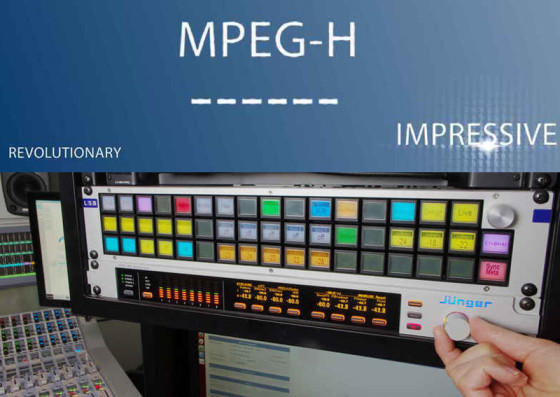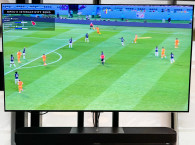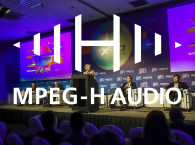During an ATSC 3.0 audio demonstration event held in Atlanta, GA, (July 12-16, 2015), Jünger Audio and Fraunhofer IIS have presented a prototype multichannel monitoring, authoring, and loudness processor for the new MPEG-H TV audio system. The Jünger Audio technology enables broadcasters using the MPEG-H system to maintain compliance with loudness regulations while avoiding the processing artifacts of traditional loudness control approaches.

Since US broadcasters became subject to sanctions for loud advertisements under the federal CALM Act, many TV networks, local stations, and cable or satellite operators adopted loudness processing as a precautionary measure. The available technologies required re-processing the broadcast programming at each point in the signal chain leading to a loss of dynamic range not only in commercials but also in programming. As a result, the overall quality of the broadcast audio can be diminished.
In the new MPEG-H system, content may be tagged to indicate it already has been processed or leveled for proper loudness control. This allows for managed loudness processing where loudness control is only engaged on unprocessed content, avoiding the degradation of multiple leveling passes. This happens in real time as the content is broadcast.
This automatic selective loudness control feature is integrated into the MPEG-H Audio Monitoring and Authoring Unit produced by Jünger Audio in collaboration with Fraunhofer IIS.
“We are excited to work with Jünger Audio on this product as it will enable broadcasters to offer better audio quality while satisfying their viewer’s desire for consistent loudness. It is an example of how working with an open standard such as MPEG-H allows rapid innovation,” says Robert Bleidt, Division General Manager at Fraunhofer USA. “One application we see for this is control of loudness at network affiliates. The network signal may be leveled prior to distribution, and not touched by the Jünger Audio processing. Only the local ads and programming inserted by the affiliate will be processed, preventing double compression of the audio,” he added.
“When we started to develop our multi channel monitoring and authoring unit for use with the proposed new immersive audio formats, we knew that effective loudness control was going to be a vital requirement right from the beginning to ensure maximum audio quality and loudness that is consistent and compliant with existing regulations and recommendations,” explains Peter Poers, Managing Director of Jünger Audio GmbH. “Our years of experience in developing the Level Magic loudness management algorithm meant that we were perfectly placed to provide high performance technology allowing broadcasters to transition to the new emerging audio formats with confidence and minimal workflow changes, whilst ensuring that end users benefit from the enhanced listening experience with predictable and reliable results”.
Jünger Audio Level Magic loudness processing has more than 23,000 channels deployed worldwide. Designed to be audibly transparent, the algorithm is highly adaptive to the structure of the incoming audio and requires only a small number of parameters to be set by the user.
www.iis.fraunhofer.de/amm
www.jungeraudio.com






